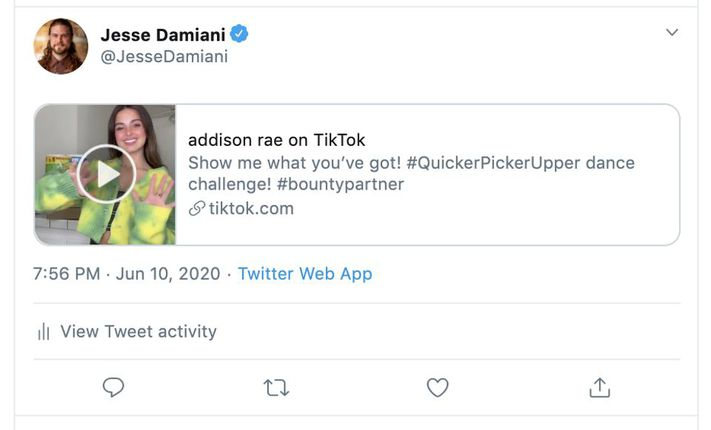NAD Brings New Kind of Dance ‘Challenge’: TikTok Video-Sharing Tools May Create Liability for Brands and Influencers
While controversy swirls as to whether the social media platform TikTok will be banned from the U.S., a recent National Advertising Division (NAD) case sheds some light on best practices when engaging influencers to create and post content on TikTok. As most advertisers are aware, the Federal Trade Commission’s (FTC) Guides Concerning the Use of Endorsements and Testimonials in Advertising (the Guides) require influencers to disclose any material connection that exists between them and an advertiser, such as payment or free product received, in exchange for promoting a brand. Following an inquiry by the NAD, The Procter & Gamble Company (P&G) is required to ensure that when its paid influencers disclose their material connection when posting videos on TikTok, the disclosure will continue to appear on any platform where those TikTok videos can be shared.
The TikTok influencer videos in question featured a “dance challenge” in which the influencers break out into a dance while a high-pitched voice-over sings about how it’s time to “clean up your life.” Bounty paper towels appear in the background of the TikTok videos, and all the videos clearly and conspicuously include the hashtag #BountyPartner, disclosing the material connection between the influencer and P&G in accordance with the Guides. So what went wrong?

When those influencer videos were shared to Instagram, they no longer included the #BountyPartner hashtag indicating the paid partnership between P&G and the influencer (but the disclosure did appear when the videos were shared to other platforms, e.g., Facebook and Twitter (see Twitter example above)). While the NAD found that the influencers adequately disclosed their material connection to P&G when the videos were posted on TikTok, the NAD was concerned that consumers seeing the TikTok videos in question on Instagram would not understand that these videos were paid advertisements. When a user shares a video directly from TikTok to certain other social media platforms, the description of the video and any hashtags—including any disclosures that the influencer may have added to comply with the Guides—do not migrate with it. Only the TikTok watermark and the creator’s username remain. Thus, a “disclosure loophole” is created when TikTok influencers share their TikTok content on Instagram, resulting in no disclosure when the video is viewed on the latter platform.
To address the NAD’s concern and to avoid losing the disclosure when TikTok content is shared, brands should ensure that their TikTok influencers embed the disclosure in the actual video itself so that the disclosure travels with the content as it goes viral and is shared on other platforms.
Why it matters: As part of its ongoing, routine monitoring program, the NAD raised concerns about influencer videos sponsored by P&G for its Bounty paper towels featured on TikTok—specifically that the material connection disclosures between the influencer and P&G, which appeared clearly and conspicuously on the TikTok platform, did not always appear when the videos were shared on other platforms (specifically, Instagram). Consumers who viewed these videos on Instagram would not understand the material connection between the influencers and P&G (i.e., that what they were viewing was an advertisement and not simply a fun video). P&G was apprised of this problem prior to the NAD’s inquiry and the company began requiring that its influencers embed disclosures in their videos so that the disclosures would transfer along with the videos when shared across platforms.
By placing disclosures only in the caption of a video posted on TikTok, the brands and influencers who have popularized the platform may be exposing themselves to potential violations of the Guides. This case should serve as a reminder to brands that it is not enough to just require influencers to make a disclosure in their influencer agreements; it is also necessary to review each piece of influencer content and make sure that the disclosure will stick with the content when shared across platforms. Brands that repurpose their influencers’ sponsored TikTok content for marketing on other social media platforms may be at particular risk if they do not notice the removal of the disclosures from such content when it is downloaded or shared from TikTok. Thus, a best practice for the creation and distribution of video content is to require that your influencers embed the disclosure through a superimposed textual overlay in the video content itself to ensure the disclosure is viewable and maintained across social media platforms. To the extent this requirement isn’t already covered in your brand’s Influencer Social Media Guidelines, it may be a good time to update them to make sure this requirement is clear. Your Manatt Advertising, Marketing and Media team is standing ready, willing and able to help you make these updates.
